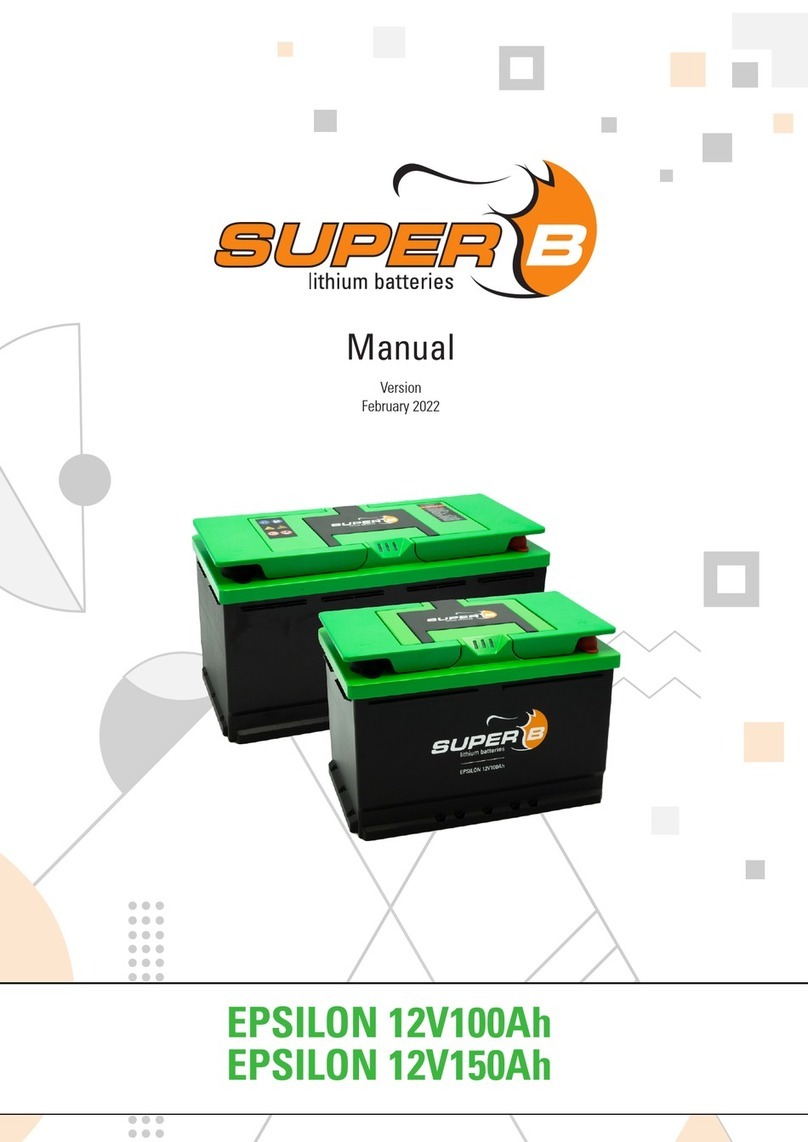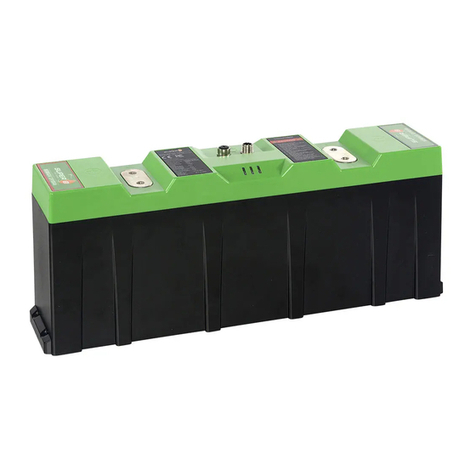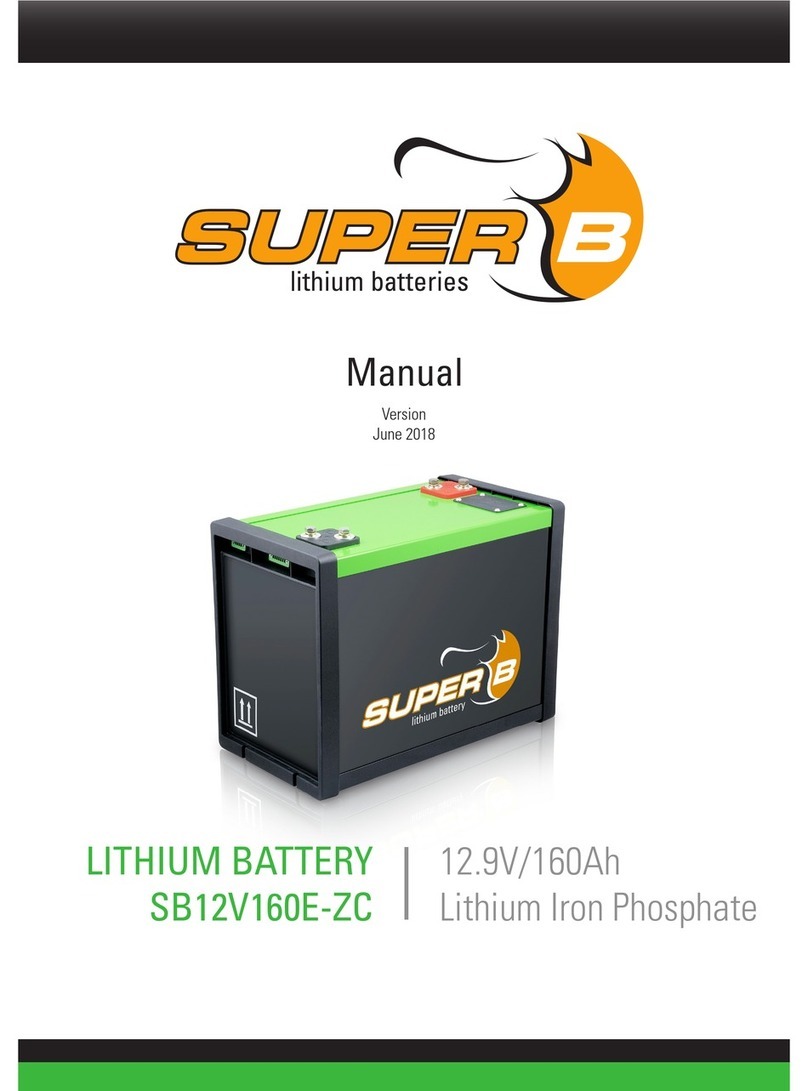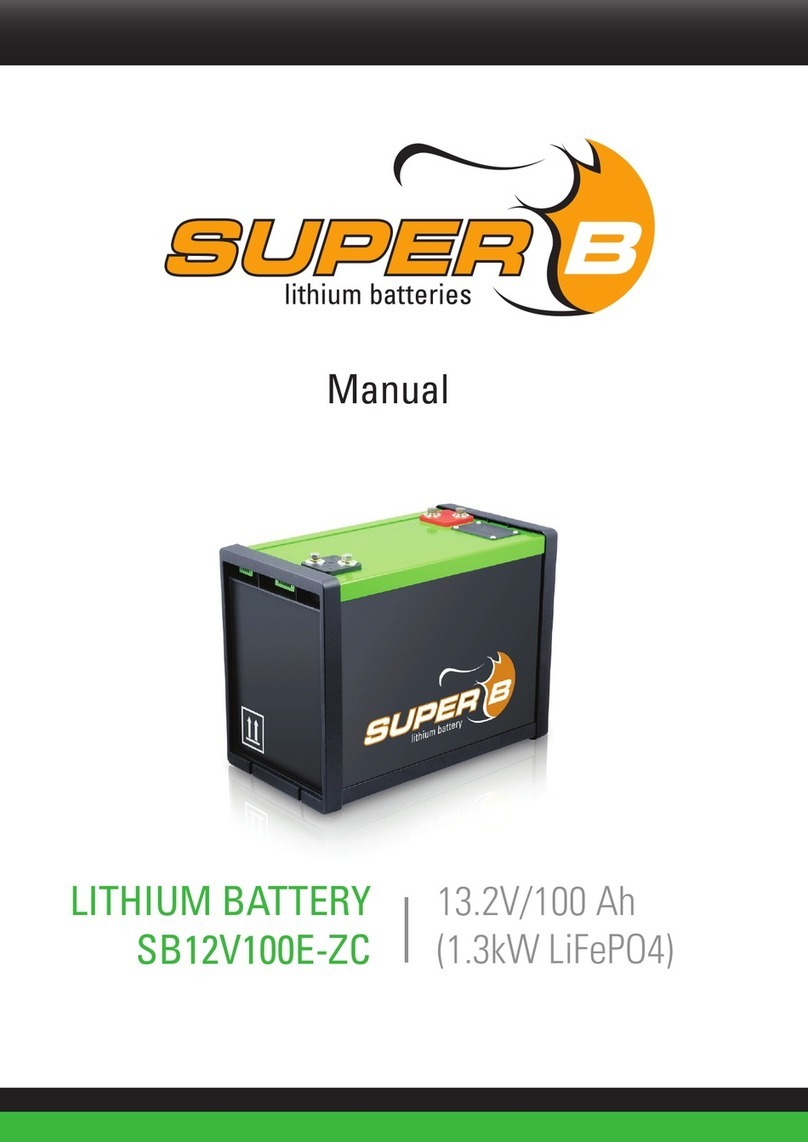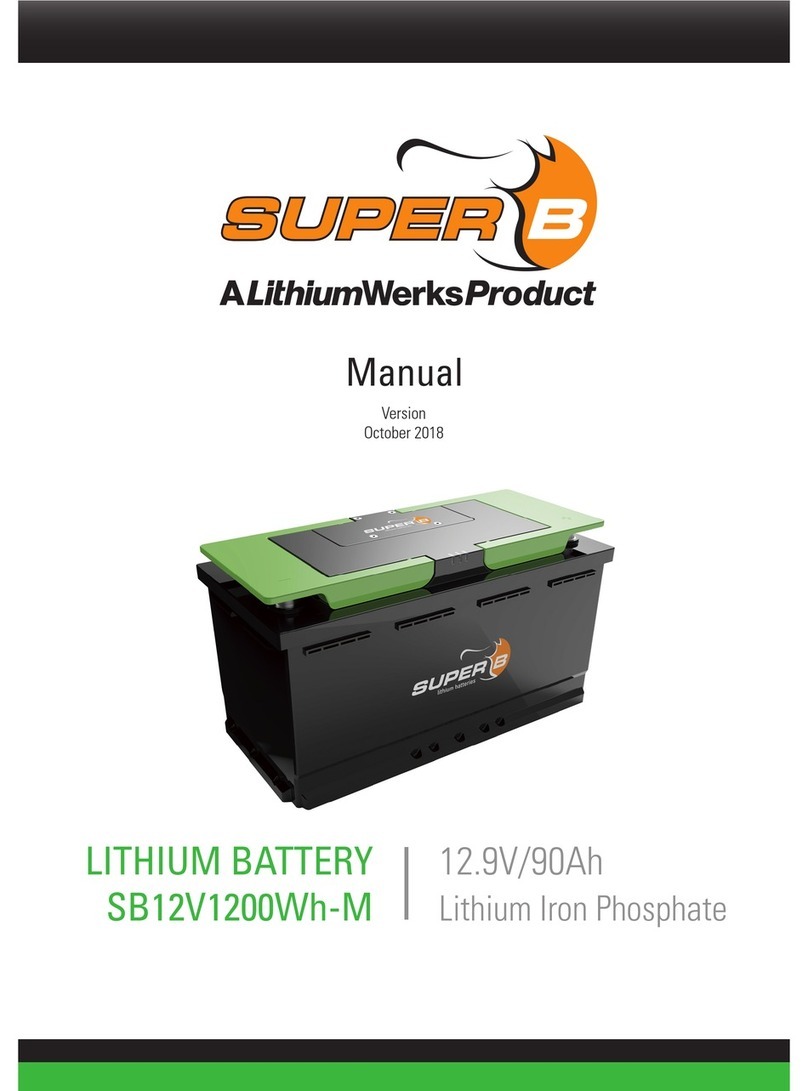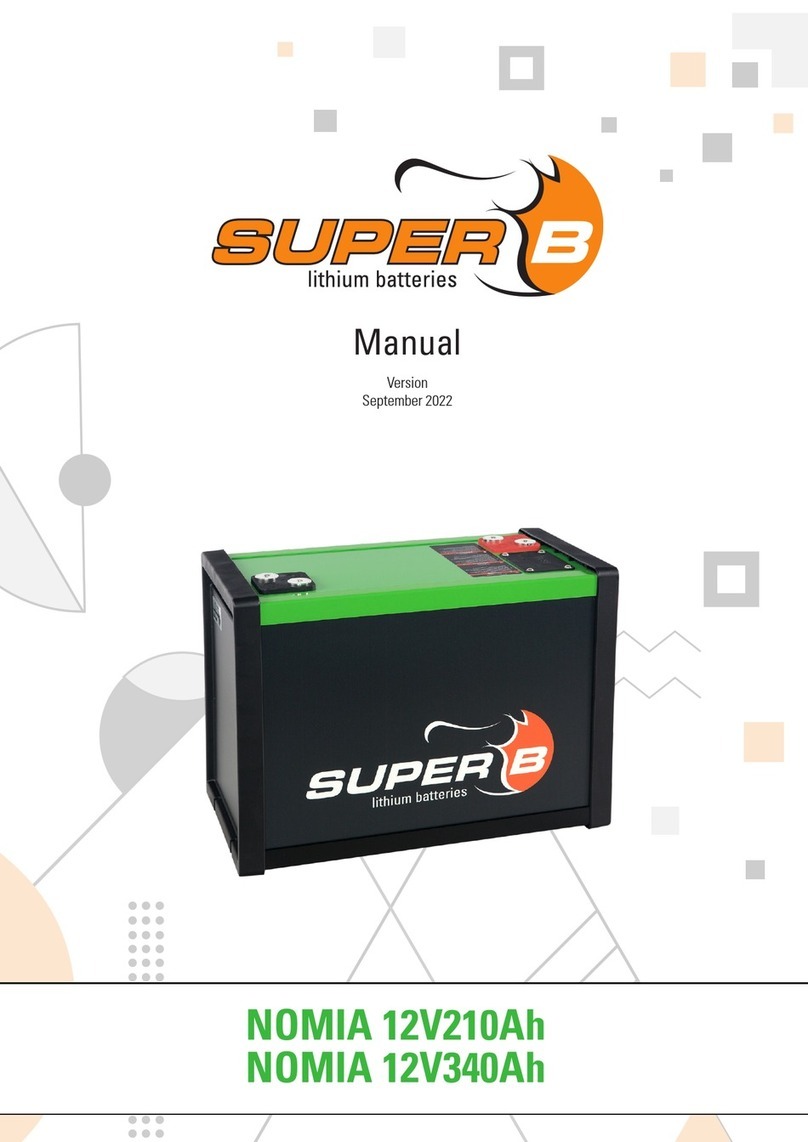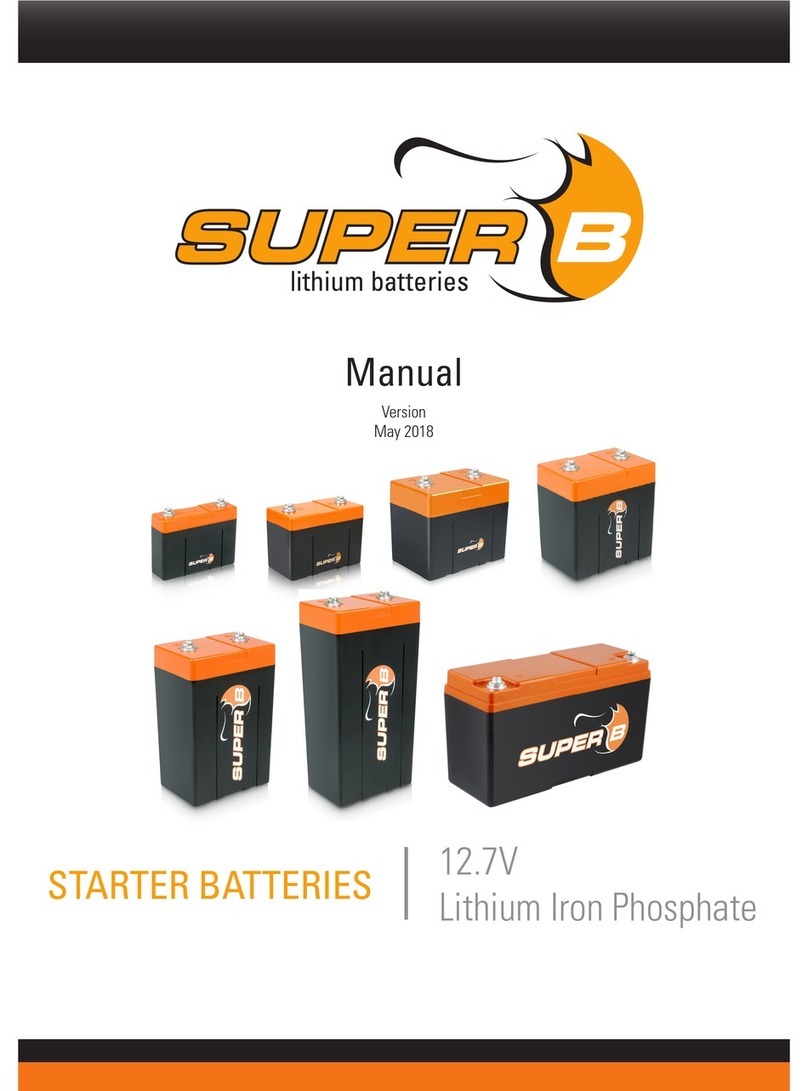
7
Be in charge. Super B.
2. Introduction
2.1. Product description
The Mason 12V20Ah / 12V25Ah power battery is light-weighted, compact and offers high
performance. Thanks to its lithium iron phosphate technology and integrated Battery
Management System (BMS) this new generation battery is extremely reliable and offers
optimal safety. The BMS constantly monitors the status of individual battery elements such
as cell temperature, cell voltage, charge and discharge currents. The integrated BMS also
provides cell balancing.
Please note that Li-ion batteries have to be treated differently from conventional lead-acid
batteries. We kindly ask you to pay attention to the warnings as mentioned on the battery:
1.Risk of re and burns when not used or treated correctly.
2.Do not open, crush, heat above 60°C or incinerate.
3.Follow manufacturer’s instructions.
4.Avoid contact with electrolyte. In the event of an accident, ush with water.
5.Do not jumpstart.
6.Use correct charger.
7.Do not puncture or impact this battery.
8.Do not short battery terminals.
9.Do not reverse connect (polarity).
10.Do not operate battery beyond published maximum specications.
11.This product can store fault conditions internally, like excessive charge current or deep
discharge situations. Super B uses this information in the warranty process.
2.2. Intented use
The Mason series Li-ion battery serves as a voltage source for starting combustion engines,
which use a 12V board net. Also stationary applications which require a short and high peak
current can benet from using this Li-ion battery. The Mason series Li-ion battery has an
integrated BMS, which will monitor whether the battery is being misused and will then shut
down to protect the Li-ion cells. Therefore it is not advised to use the battery in vehicles or
systems where the battery voltage, current or temperature exceeds the specied working
range. In these circumstances the battery will shut down and can cause damage to the 12V
system if it is not designed for Li-ion battery use. Never install multiple Li-ion batteries in
series or parallel.
2.3. Glossary of Terminology
Endurance Life-cycle: The products maximum lifespan, achieved by following the guidelines
presented in this manual
